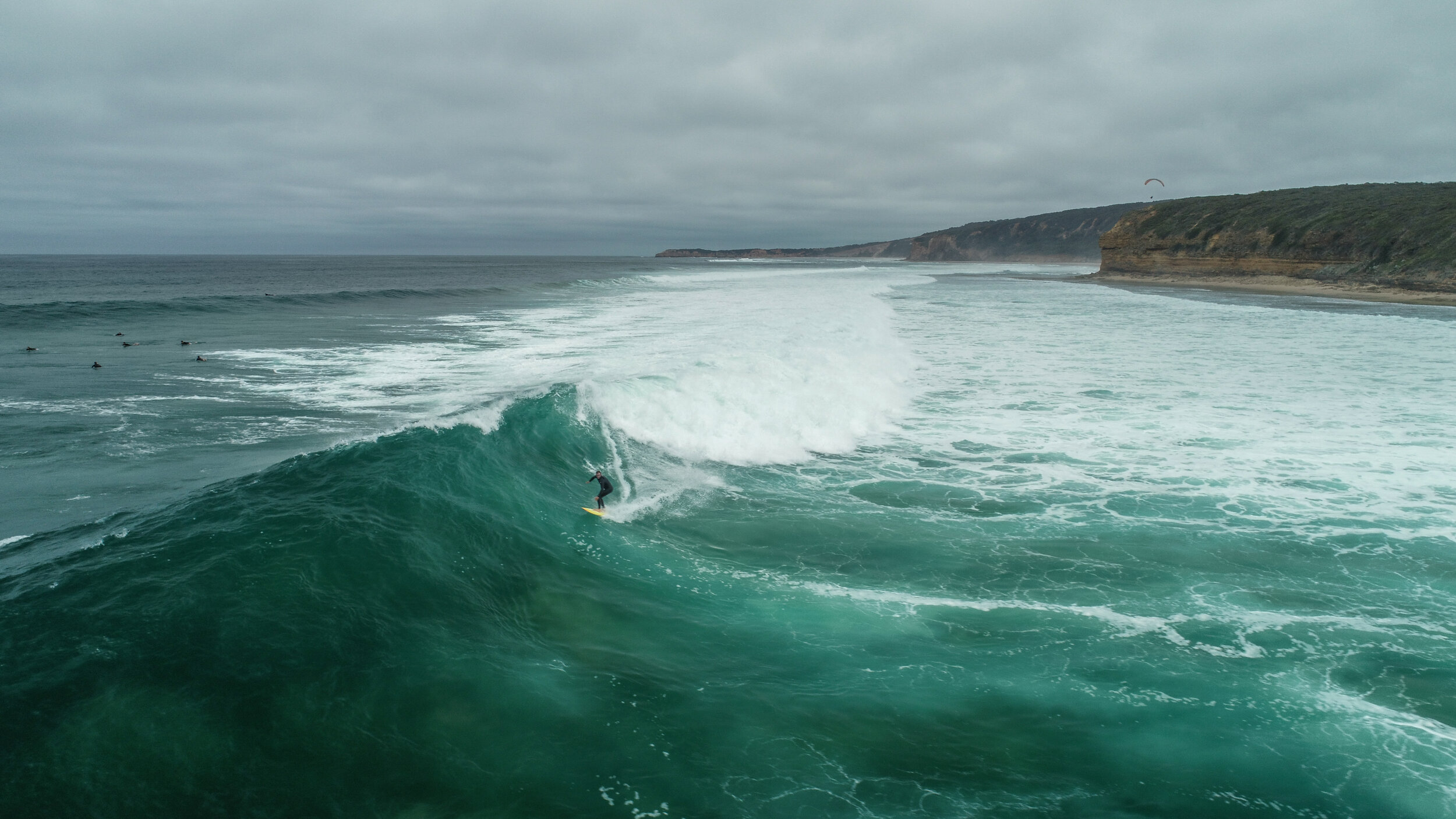One of the largest seahorse species in the world, The big bellied Seahorse (Hippocampus abdominalis) can reach up to 35 cm in length. Recognisable by its yellow colouration and pronounced belly, the big bellied Seahorse is a relatively strong swimmer, capable of travelling hundreds of metres per day.
There are several species of temperate boxfish endemic to the Great Southern Reef. Unlike puffers and porcupine fish, boxfish have a hard shelled bony shield with holes for the fins and slits for gills.
While it may look like a tropical fish species, the harlequin fish is a colourful, rocky reef species endemic to the Great Southern Reef. Affectionately known as “Harlies”, these beautifully vibrant fish like to live on high profile reefs, in caves and crevices in clear coastal waters.
The iconic leafy seadragon (Phycodurus eques) may be the most recognisable fish along the southern and western coastlines of Australia.
At least 30 species of pipefish have been recorded in southern Australian waters. Pipefish look like straight-bodied seahorses with tiny mouths. The body and tail are long, thin, and snake-like. This makes them excellent at hiding among seaweed foliage and seagrass blades. Any diver will appreciate just how elusive these fish can be and they generally can only be spotted by the trained eye.
The Port Jackson shark (Heterodontus portusjacksoni) is a nocturnal, bottom dwelling ‘bullhead’ shark endemic to the Great Southern Reef. The shark's territory is habitually on or near the sea bottom, which is also its feeding area. They use the seagrass areas to camouflage with their pattern markings.
Red handfish are a type of anglerfish famous for their modified fins that resemble human hands, which they use to “walk” across the sea floor rather than swim. Known from just two small 50m patches of reef in Tasmania, red handfish are thought to be one of the rarest fish species in the world.
The spotted handfish (Brachionichthys hirsutus) is an extremely rare species of anglerfish found only in a very specific location along the Great Southern Reef – near the Derwent River estuary in Tasmania.
Anglerfishes (Phyllophryne scortea) rely on camouflage and their fishing lure to attract unsuspecting prey which is rapidly engulfed.
Southern Bluefin Tuna (Thunnus maccoyii) are an important apex predator in the Great Southern Reef ecosystem. These waters provide a summer home for young southern bluefin tuna (one to four years), with large numbers migrating into the warm, shelf waters each year to feed on abundant prey. As the largest of the tuna species, these fish are one of the top predators in the marine food chain.
The Southern Blue Devil (Paraplesiops melagaris) is an iconic temperate reef species, easily recognisable by their striking iridescent blue spots, dark blue body, large dark eyes, and elongated fins. This visually spectacular species is a favourite among recreational divers, often providing stunning photographic opportunities.
Dubbed a species of “carpet shark” due to their varying ornate patterned appearance, the Spotted Wobbegong (Orectolobus maculatus) is recognisable by its saddle and O-shaped white spots, green-ish brown body colour, robust flattened torso and tassel-like skin flaps around their jaw.
Highly dependent on their camouflage, juvenile weed whiting (Haletta semifasciata) tend to live amongst seagrass as they blend in perfectly.
The weedy seadragon (Phyllopteryx taeniolatus) is the aquatic emblem for the state of Victoria. Thier leaf-like appendages resemble the swaying kelp fronds found in their habitat. They drift gracefully around seaweed beds and seagrass meadows relying on camouflage and stealth to approach their unsuspecting prey.
The western blue groper (Achoerodus gouldii) is a slow growing and inquisitive fish that lives in the coastal reefs all along the Great Southern Reef and can live for up to 70 years. A large bony fish, they can grow to be up to 1.7 metres in length, and are not fully grown until they are about 30 years old. Even though they are called a ‘groper’ they are actually a large wrasse.
Yellowtail Kingfish are natural inhabitants of the cold, clean waters of the Great Southern Reef. This streamlined pelagic species can be identified by its greenish-blue upper body and silvery-white lower body, accented by a trademark yellow tail and a stripe that runs from snout to tail. They are known to grow up to 70 kilograms in weight and 2.5 meters in length, making them one of the more imposing figures cruising around coastal temperate reefs.

















